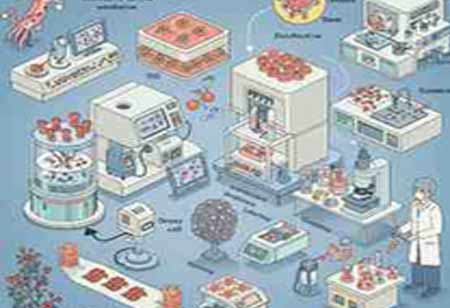Personalized Hearing: The Cutting-Edge Evolution of Hearing Aids

By
Medical Care Review | Monday, March 17, 2025
Stay on top of your health and well-being with exclusive feature stories on the top medical clinics and treatment centers, expert insights and the latest news delivered straight to your inbox. Subscribe today.
Hearing loss has become increasingly prevalent, increasing demand for hearing aids and associated services. This surge has prompted significant technological advancements and the expansion of service offerings. Today, hearing aids have evolved beyond simple sound amplification to become sophisticated tools that provide users with personalized, high-quality listening experiences. These devices are now designed to meet the specific needs of individuals, ensuring a more natural and comfortable auditory experience while integrating advanced features for improved communication and daily interaction.
The market is experiencing growth in direct-to-consumer sales channels. Traditionally, hearing aids were sold through audiologists and clinics; however, consumers can now purchase them online or at retail stores. This shift is driven by the increasing availability of online hearing tests and a rising comfort among individuals to manage their health needs independently. Additionally, telehealth services have become more popular, allowing for virtual consultations, remote fittings, and ongoing support, which make hearing aid services more accessible and convenient.
The hearing aid industry confronts multiple formidable challenges, with the prohibitive costs of devices and associated services being particularly salient. The expenditure required for high-quality devices, professional fittings, and continuous support can be substantial, thereby restricting accessibility for a significant portion of the population that could benefit from auditory assistance. In response to these financial barriers, introducing over-the-counter hearing aids has emerged as a viable solution, offering a more cost-effective option for consumers. These devices are primarily designed for individuals experiencing mild to moderate hearing loss and circumvent the need for professional fittings or ongoing consultations, thereby decreasing their overall costs. Certain manufacturers are implementing subscription-based pricing models, facilitating a more manageable payment structure that enhances accessibility for broader demographics.
The industry must address the pervasive stigma associated with hearing aids. Many individuals exhibit reluctance to acknowledge hearing loss or to utilize auditory devices due to concerns related to personal image and societal perceptions, where hearing aids are often linked to aging or disability. In counteracting this stigma, industry stakeholders have emphasized design innovation, resulting in increasingly compact, aesthetically pleasing, and discreet devices. Many modern hearing aids share visual characteristics with popular consumer technology, such as wireless earbuds, thus improving their social acceptability. Concurrently, strategic awareness campaigns are being deployed to educate the public about the ramifications of untreated hearing loss. The engagement of influential figures from diverse sectors who openly articulate their experiences with hearing aids plays a critical role in normalizing their use and mitigating associated stigma.
Maintenance and repairs of hearing aids can be inconvenient and expensive, particularly as devices require regular cleaning, battery replacements, and occasional maintenance. Hearing aid manufacturers have introduced more durable, long-lasting devices to address this issue. Many manufacturers design hearing aids to be water-resistant and to resist dust and earwax buildup. Rechargeable batteries have become more common, eliminating the need for frequent battery replacements, and self-maintenance kits are being offered to users for basic troubleshooting. Many providers offer extended warranties and maintenance packages to ensure users can access repair services without significant additional costs.
The hearing aid services sector is witnessing numerous opportunities that benefit many stakeholders, including manufacturers, service providers, and consumers. One of the most influential opportunities lies in developing personalized and adaptive hearing solutions. With artificial intelligence and machine learning advances, hearing aids are becoming more attuned to individual user needs. These technologies can adjust the settings of hearing aids in real time based on environmental factors, such as background noise and the user's preferences, offering a truly customized listening experience.
Data analytics in hearing aid services offers valuable insights into user behavior, helping audiologists provide more targeted care. For example, sensors in hearing aids monitor how often users wear them, the environments they encounter, and any potential changes in hearing over time. Manufacturers can use this information to enhance device performance and provide recommendations, ensuring users receive optimal care.
The growth of teleaudiology services also presents significant opportunities. As remote consultations and online support become more prevalent, individuals can receive hearing assessments, device fittings, and troubleshooting from the comfort of their homes. This model can reach a wider audience, particularly those with difficulty accessing in-person care due to mobility issues or geographic location. Teleaudiology can reduce wait times and improve the efficiency of hearing aid service delivery.







